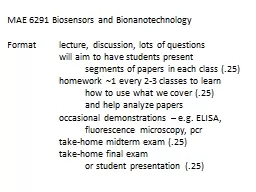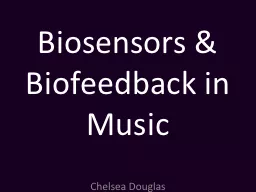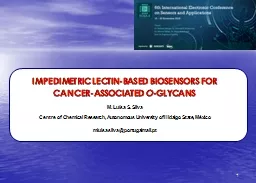PPT-MAE 6291 Biosensors and
Author : terrificycre | Published Date : 2020-06-15
Bionanotechnology Format lecture discussion lots of questions will aim to have students present segments of papers in each class 25 homework 1 every 23 classes
Presentation Embed Code
Download Presentation
Download Presentation The PPT/PDF document "MAE 6291 Biosensors and" is the property of its rightful owner. Permission is granted to download and print the materials on this website for personal, non-commercial use only, and to display it on your personal computer provided you do not modify the materials and that you retain all copyright notices contained in the materials. By downloading content from our website, you accept the terms of this agreement.
MAE 6291 Biosensors and: Transcript
Download Rules Of Document
"MAE 6291 Biosensors and"The content belongs to its owner. You may download and print it for personal use, without modification, and keep all copyright notices. By downloading, you agree to these terms.
Related Documents














